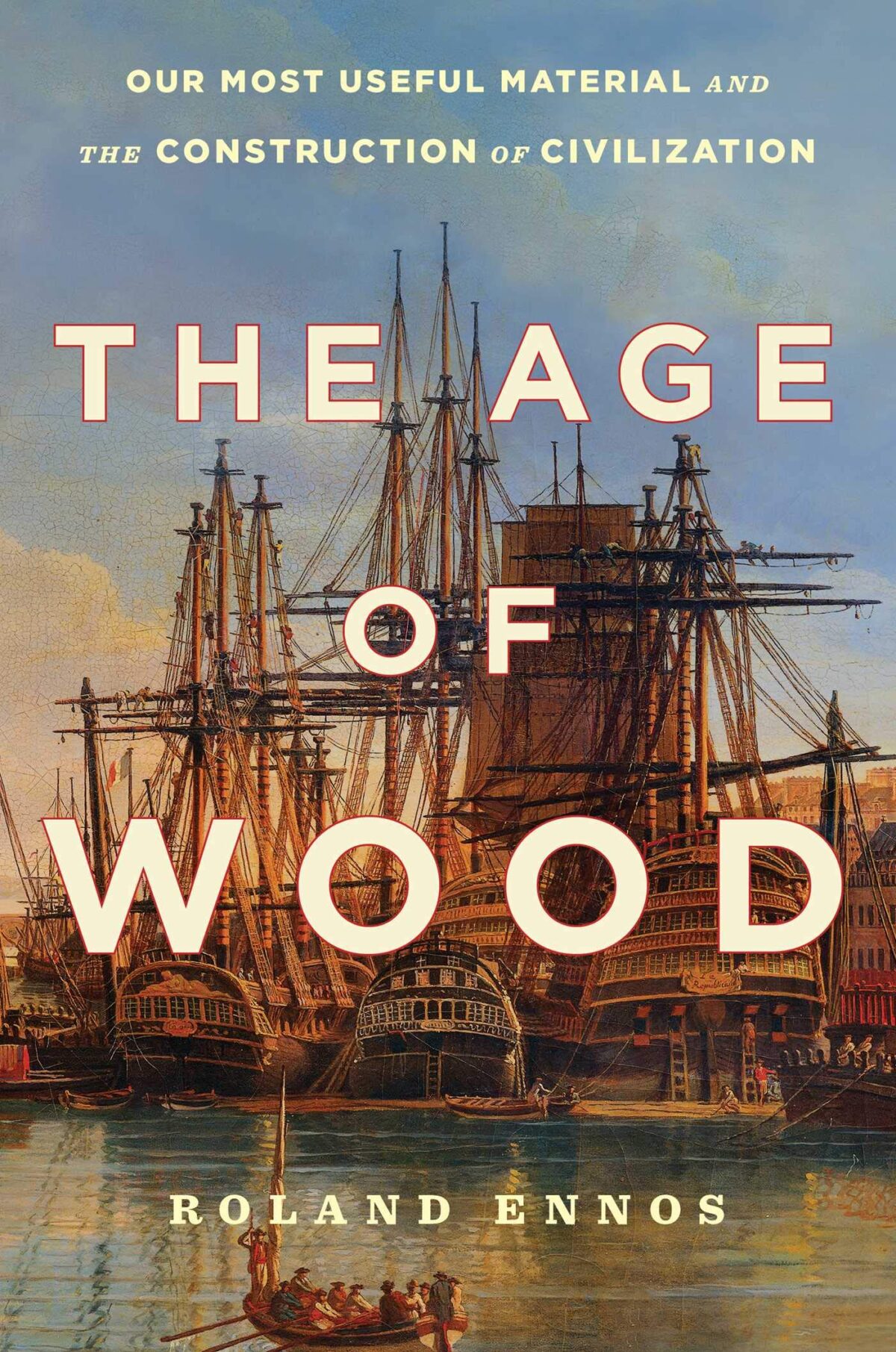Ennos, Roland. The Age of Wood: Our Most Useful Material and the Construction of Civilization. New York: Scribner, 2020.
I once read a book that claimed the colonists’ most important reason for fighting the American Revolution was for control of cod fishing rights off the coast of Newfoundland. That book, fittingly entitled Cod, fell prey to what many of us here at Concerning History call “dissertation syndrome:” when a work of history tries to not just address an underserved topic, but claim that its subject is actually the most important subject out there. Sometimes it works; more often, it sabotages what would otherwise have been a fascinating study. Thus it was with my most recent acquisition, Roland Ennos’s The Age of Wood.
Ennos’s work starts out with an intriguing premise: the most fundamental and ubiquitous material in human history has largely been sidelined in studies of our development as a species. Wood has been at our side since before the emergence of Homo sapiens, from hominids living in the trees of prehistoric Africa to the great warships of the nineteenth century. The Age of Wood is at its best in its early chapters, showing how fundamental to human evolution trees and wood really were, offering fascinating ramifications for theories concerning human sentience. Ennos is in fact a specialist in biomechanics, not history, and so his discussions of the unique physical properties of wood and the engineering principles behind humanity’s phases of architecture are also masterful, if a little difficult to follow for those unfamiliar with his terminology (including myself).
The Age of Wood begins to fall apart, however, as soon as humanity enters the Stone Age. Ennos has a chip on his shoulder (no pun intended), and it’s source is the prioritization of all the other flashy materials traditionally used to measure human progress: stone, copper, bronze, and iron. He does an admirable job of demonstrating that wood never lost its importance, and indeed has been secretly behind the successes of many modern marvels. However, instead of stopping there, Ennos feels the need to disparage these other materials, even as he admits they proved the key to unlocking more and more of wood’s potential. This isn’t helped by the fact that The Age of Wood is organized only loosely along chronological lines. Some chapters jump from pre-Roman Britain to medieval Europe back to Roman Britain in a dizzying discussion of building or crafting techniques that never gives the reader a good understanding of just how these developments progressed over time. Ennos also feels the need to disparage academics who defend theories other than his own, in fields other than his own. All too often, however, these theories are ones that cannot be proven without more extensive study; no wonder academics are reluctant to go along with this non-historian’s ideas!
By the time The Age of Wood reaches its conclusion and Ennos reflects on woods’ future uses, what had been a passionate, if tangled, narrative finally leaves behind any semblance of responsible historical study. Readers are treated to two chapters of what amounts to return-to-nature propaganda, lacking any citations for the many modern practical and psychological benefits of wood that Ennos propagates. In light of his conclusion, Ennos’s work seems more akin to a Luddite conversion pamphlet than any kind of monograph. While this may turn some readers off (myself among them), the value of Ennos’s early chapters as an anthropological survey shouldn’t be lost. He is persuasive that humans and trees have been evolutionary siblings; he and I will just have to disagree on the extent of our need to return to them.
